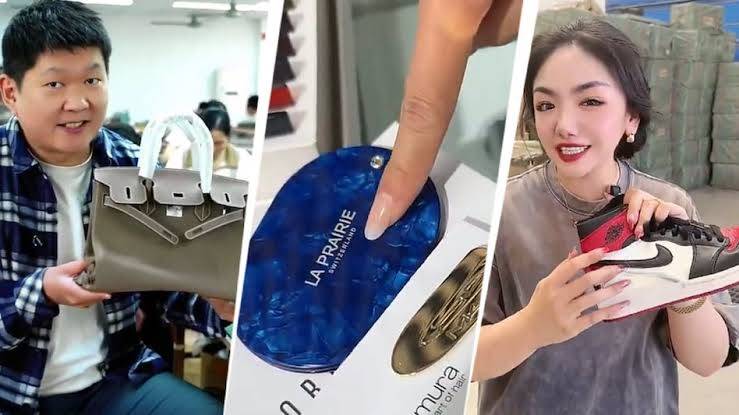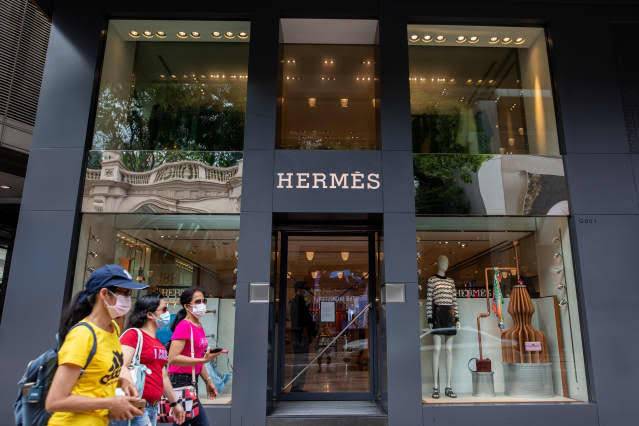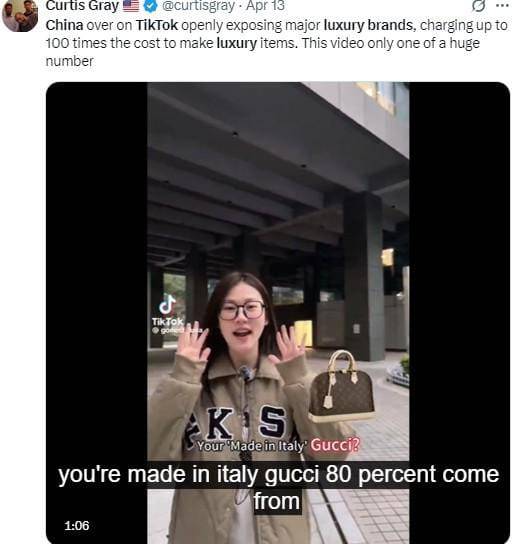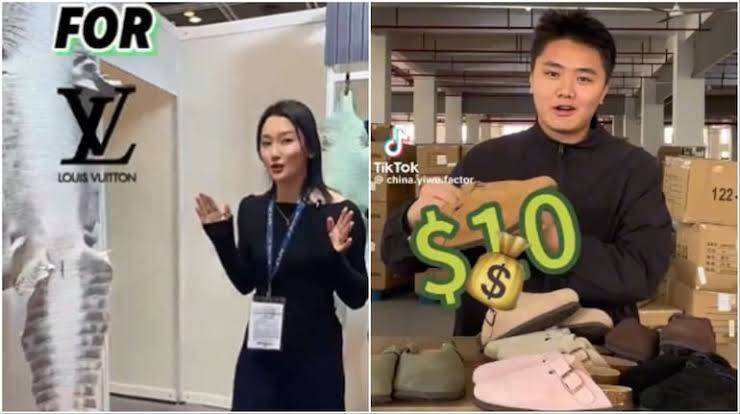Made in China, Marked Up in Paris | The Luxury Price Illusion

In recent weeks, the internet has been abuzz with revelations that have sent shockwaves through the luxury fashion industry. Chinese manufacturers and influencers are taking to platforms like TikTok to unveil a startling truth: many high-end luxury items, often perceived as exclusive products of European craftsmanship, are actually produced in China at a fraction of their retail prices.

These disclosures have ignited a firestorm on social media. Viral videos showcase factories producing items strikingly similar to luxury products from brands such as Hermès, Louis Vuitton, and Prada. One particularly eye-opening claim suggests that a bag comparable to a Hermès Birkin, which retails for tens of thousands of dollars, can be manufactured in China for approximately $1,000. Another video alleges that 80% of Chanel cosmetics are made in China and sold at a fraction of the price, prompting consumers to question the true value of these luxury items.

The timing of these revelations is closely tied to escalating trade tensions between the U.S. and China. In response to increased tariffs imposed by the U.S., Chinese manufacturers are adopting a more transparent approach, revealing their roles in the production of luxury goods. This transparency not only challenges the traditional narratives upheld by luxury brands but also empowers consumers with information that was previously obscured.


Online platforms are playing a pivotal role in this unfolding drama. Websites like DHgate have gained prominence by offering consumers direct access to manufacturers, allowing them to purchase items that closely resemble luxury goods at significantly reduced prices. This direct-to-consumer model bypasses traditional retail channels, leading to substantial cost savings. However, it also raises concerns about product authenticity and quality, as many of these items are unbranded or counterfeit.

The internet's reaction has been swift and intense. Consumers express a mix of outrage and betrayal upon learning that products they believed were crafted in Europe are, in fact, produced in China. Discussions are proliferating across social media platforms, with users sharing their discoveries and debating the implications for the luxury market.
The repercussions for the luxury industry are profound. Brands that have long relied on perceptions of exclusivity and superior craftsmanship are now facing scrutiny over their manufacturing practices. This newfound transparency could erode consumer trust and diminish the allure of luxury labels, potentially leading to a shift in purchasing behaviors.
Moreover, the U.S. may experience economic ramifications as consumers become more inclined to seek alternatives to high-priced luxury goods. The direct-to-consumer approach championed by Chinese manufacturers could divert sales away from traditional retail channels, impacting revenues and challenging the established dominance of Western luxury brands.
The recent exposés by Chinese manufacturers have unveiled a complex web of production and branding within the luxury industry. As consumers become more informed, the traditional paradigms of luxury retail are being challenged, signaling a potential transformation in the global luxury market space.
Text: Sundus Unsar Raja @sublimerantr
